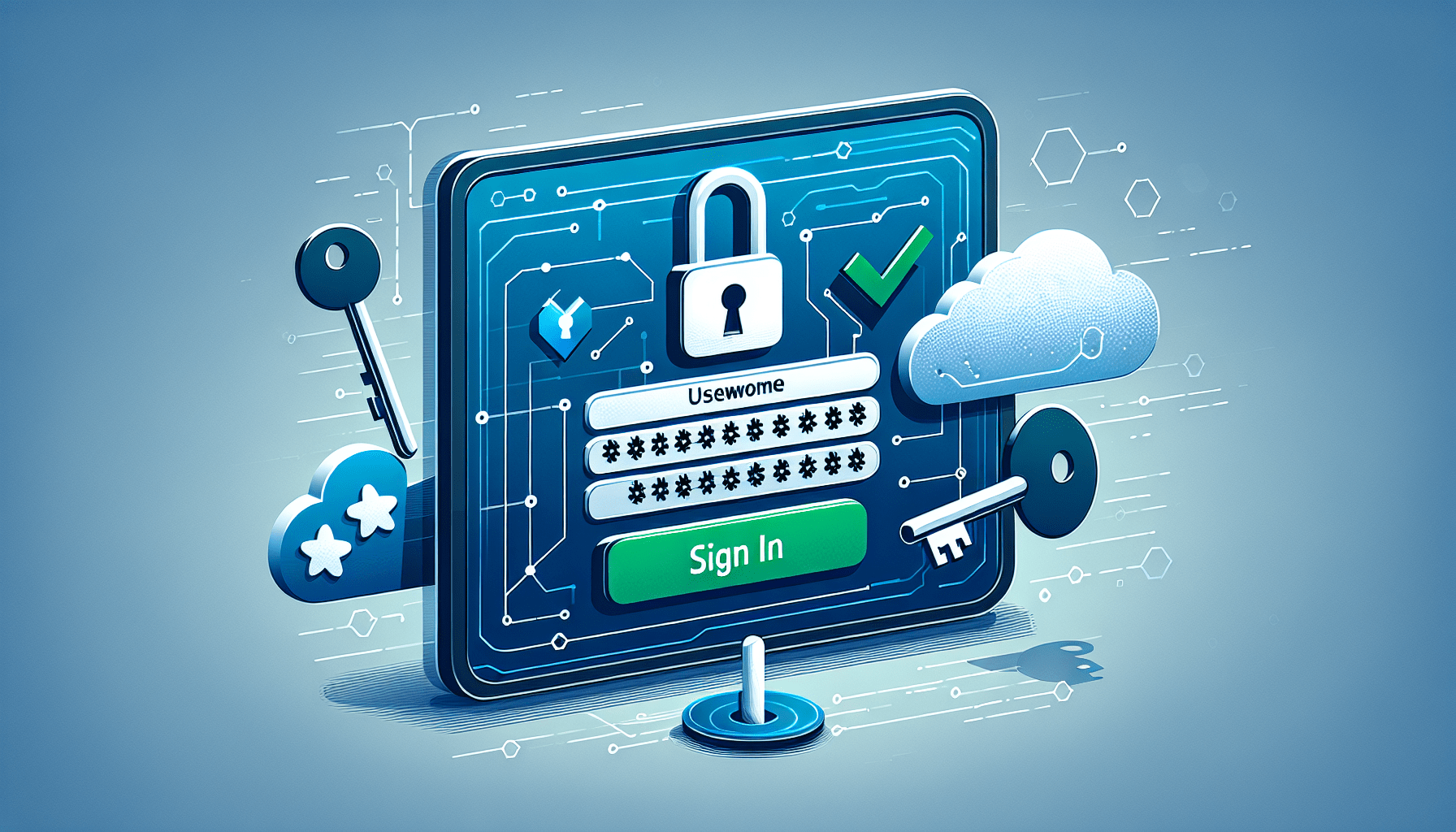Understanding Authentication & Authorization: A Friendly Guide

Authentication & Authorization
In the realm of AI personalization, the distinction between authentication and authorization plays a pivotal role in tailoring user experiences while safeguarding personal data. Authentication is the process by which a system verifies the identity of a user, typically through credentials like usernames and passwords or more advanced biometric data.
Once authenticated, authorization determines the level of access and personalization that the user is granted within the system. This ensures that users receive a customized experience that aligns with their preferences and permissions, all while maintaining the integrity and security of the system’s architecture.
Hey there! So, you are interested in authentication and authorization, huh? You’ve come to the precise place. Let’s break it down collectively as if we’re chatting over a cup of espresso.
Grab your mug, and let’s dive in a bit deeper. Authentication is like the bouncer at the club of your digital world—it checks your ID to make sure you are who you say you are. It’s all about verifying your identity before letting you access your precious data and applications.
On the flip side, authorization is the cool friend who knows the bouncer and tells them which VIP areas you’re allowed to groove in. It’s the process that comes after authentication, determining your permissions and what resources you can interact with.
Together, they form the dynamic duo that keeps your online experience both personal and secure. These two ideas may sound like tech jargon; however, they’re simply the gatekeepers of the digital world. Think of them as the bouncers at a membership—they determine who will get in and what they’ll do as soon as they’re inside.
What’s the Difference?

AI personalization is the sophisticated cousin of traditional customization, leveraging machine learning and data analytics to tailor the digital environment to the individual user. Unlike the one-size-fits-all approach of yesteryear, AI-driven systems observe user behavior, analyze patterns, and predict preferences to present a unique, curated online experience.
This not only enhances user engagement by making interactions feel more intuitive and relevant but also significantly boosts the efficiency of services by anticipating needs and reducing the noise of irrelevant content. Authentication and authorization typically go hand in hand; however, they play different roles.
1: AI personalization extends beyond simple convenience; it is rapidly transforming the landscape of user experience. By leveraging machine learning algorithms, AI systems can analyze vast amounts of data to identify patterns and preferences unique to each user.
This enables a level of customization previously unattainable, allowing for dynamic content curation and adaptive interfaces that evolve with the user’s behavior, ensuring that every interaction is as meaningful as it is seamless.
Authentication is like displaying your ID at the door. It’s all about proving who you might be. Do you keep in mind the final time you need to enter a password or use your fingerprint to unlock your cellphone? That’s authentication in motion.
2: Once you’re authenticated, the real magic of AI personalization can begin. It’s akin to stepping into a world that’s been custom-tailored to your preferences and behaviors. The AI learns from your interactions, taking note of the content you linger on, the choices you make, and even the times of day you’re most active.
With each action, the system becomes more adept at predicting your needs and delivering a user experience that feels both intuitive and effortlessly bespoke.Authorization, however, is the method that occurs when you’re inside. It determines what you’re allowed to do. Can you enter all of the rooms or simply the dance floor?
Quick Tip!
🔍 Remember: authentication = identity verification, authorization = permission granting.
Real-World Example:
In the realm of AI personalization, this distinction becomes crucial. Just as a bouncer at a club needs to know who you are before letting you in, AI systems must authenticate users to provide a tailored experience. Once your identity is confirmed, the system can authorize a personalized set of actions, recommendations, and content based on your preferences and history.
This ensures that your interaction with AI is not only secure but also uniquely yours, enhancing your experience by showing you the music, events, or social interactions you’re most likely to enjoy.
Imagine you’re at a live performance. When you present your ticket, you’re authenticating yourself as a legitimate attendee. Once inside, your ticket may solely let you stand within the normal space, not the VIP part. That’s authorization at work!
Why Does This Matter?

Personalization in AI takes this concept to a whole new level. Just like the ticket system at a live event, AI uses data to authenticate and authorize, but it goes further by tailoring the experience to your individual preferences and behaviors.
It’s as if the event staff knew you loved jazz, so they directed you to a seat with the best acoustics for the saxophone solo. This matters because it enhances user engagement and satisfaction, making experiences feel unique and catered specifically to you.
In our digital age, our lives are more and more online. Authentication and authorization hold our private knowledge secure and be certain that only the precise folks have entry to sure data. Think about your checking account. You wouldn’t need simply anybody poking around in there, proper?
Tips for Secure Authentication:
1: Use Strong Passwords: Strong passwords are your first line of defense against unauthorized access. They should be a complex mix of letters, numbers, and special characters, and be long enough to deter brute force attacks.
Avoid using easily guessable information like birthdays or common words, and never reuse passwords across different accounts to minimize the risk of a security breach. Mix of letters, numbers, and symbols.
2: In addition to robust passwords, consider implementing multi-factor authentication (MFA) wherever possible. This adds an extra layer of security by requiring a second form of verification, such as a fingerprint or a unique code sent to your mobile device.
By doing so, even if a hacker manages to crack your password, they would still face another hurdle before gaining access to your account. MFA is becoming increasingly standard across various platforms, particularly for services that handle sensitive personal or financial information.Enable two-factor authentication (2FA): Adds a layer of safety.
3: Stay Updated: Keeping your software up-to-date is a crucial part of maintaining online security. Software developers regularly release updates that patch vulnerabilities and strengthen security features. By ensuring that your operating system, applications, and any security tools are running the latest versions, you’re minimizing the risk of cyberattacks that exploit outdated software.
Always be vigilant for update notifications and set up automatic updates where possible for added convenience and protection. Regularly replace your passwords and safety questions.
Pro Tip!
🔐 Never reuse passwords throughout totally different websites. It’s like utilizing the identical key for your home and your automobile—dangerous!

Interactive Element Suggestion: In the realm of AI personalization, your digital security is akin to a fortress; it’s only as strong as its weakest entry point. That’s why it’s essential to bolster your defenses with complex, unique passwords that are changed periodically.
AI-driven password managers can be a game-changer here, as they not only generate strong passwords but also keep track of them for you, ensuring that each of your digital accounts is guarded by its impenetrable gate.
Remember, in the digital world, convenience should never come at the cost of security. How about a couple of quick quizzes to check your understanding of those ideas? Or perhaps a ballot: “What frustrates you most about online safety?” It’s an enjoyable technique to interact and be taught at the same time!
Conclusion
In the digital realm, the balance between personalization and privacy is a delicate dance. As AI continues to evolve, it’s crucial to prioritize user consent and data protection while delivering tailored experiences.
Engaging with our audience through interactive content not only fosters learning but also builds trust, ensuring that the convenience of AI personalization is matched by a commitment to safeguarding personal information.
Understanding authentication and authorization is essential in today’s tech-driven world. They’re the unsung heroes preserving our digital lives secure and safe. Next time you log in to your favorite app, you’ll know precisely what’s occurring behind the scenes.
As we delve deeper into the realm of AI personalization, it becomes increasingly important to recognize the delicate balance between convenience and privacy. AI systems are designed to learn from our behaviors, preferences, and even our speech patterns to offer a tailored experience that feels almost human in its intuition.
However, this level of customization doesn’t come without its risks; it necessitates the collection and analysis of vast amounts of personal data, making the role of robust authentication and authorization mechanisms more crucial than ever in protecting our digital identities. Feel free to share your ideas or questions in the feedback below. Let’s keep the dialog going!




Thanks for sharing. I read many of your blog posts, cool, your blog is very good.
Thanks for sharing. I read many of your blog posts, cool, your blog is very good.
Thank you for your sharing. I am worried that I lack creative ideas. It is your article that makes me full of hope. Thank you. But, I have a question, can you help me?
Thanks for sharing. I read many of your blog posts, cool, your blog is very good.
Thanks for sharing. I read many of your blog posts, cool, your blog is very good.
Interesting perspective—thanks for making me think.
This is so helpful. Looking forward to your next post!
z60kx9
Thank you for your sharing. I am worried that I lack creative ideas. It is your article that makes me full of hope. Thank you. But, I have a question, can you help me? https://accounts.binance.com/zh-TC/register-person?ref=VDVEQ78S
Can you be more specific about the content of your article? After reading it, I still have some doubts. Hope you can help me.